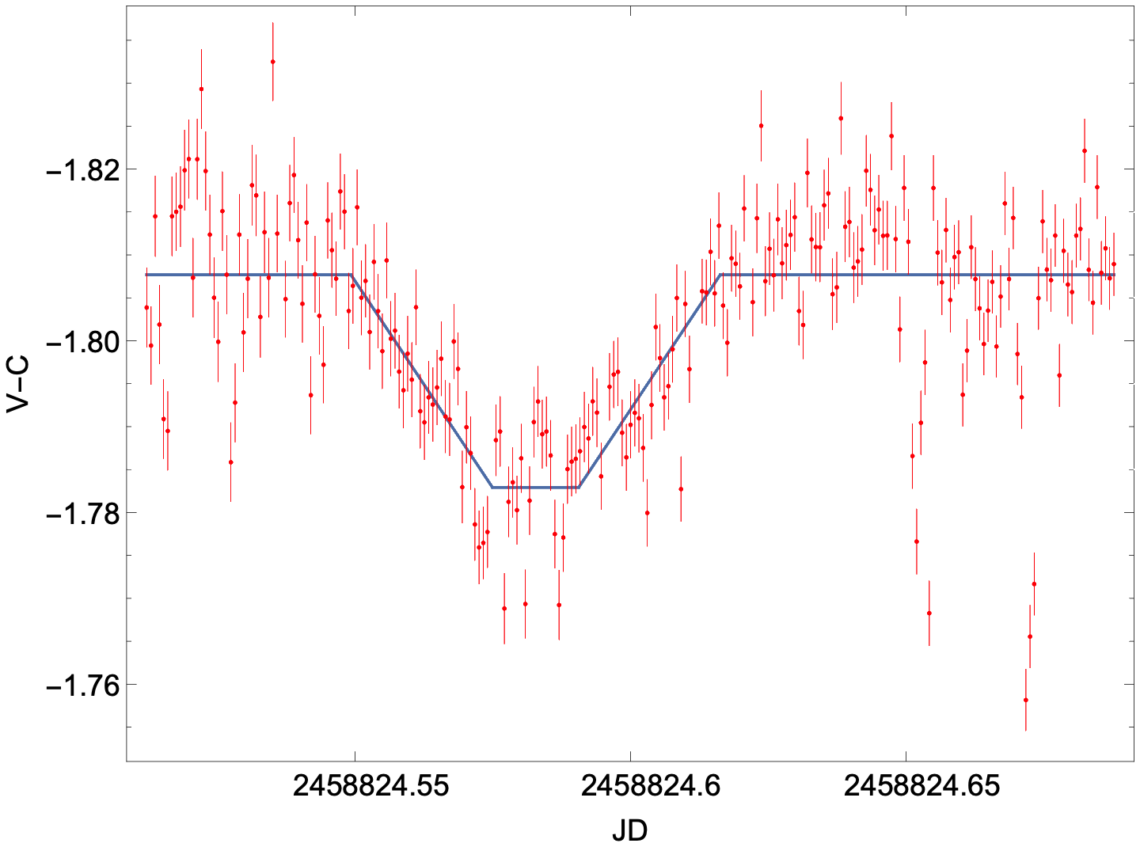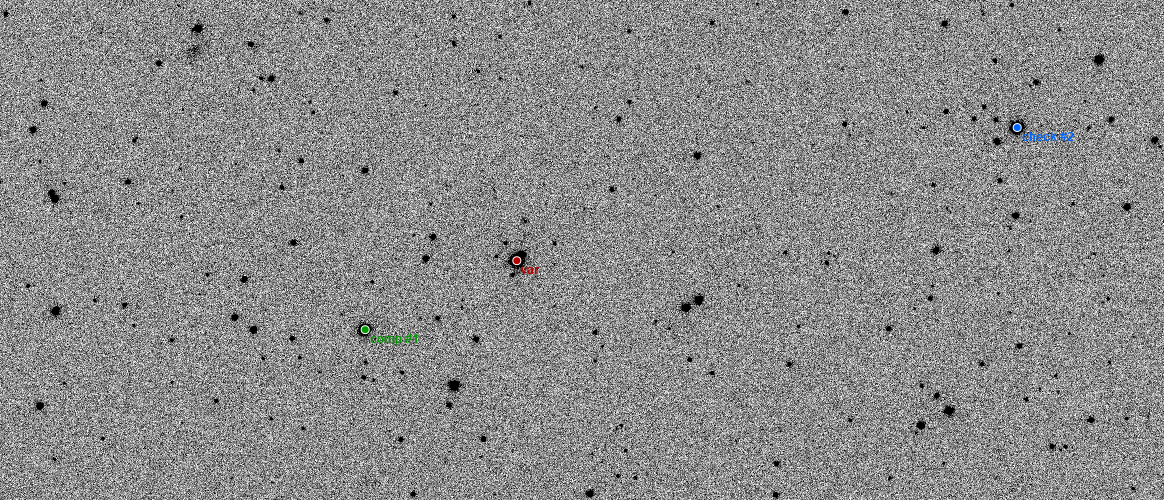Lisa Wagner & Cedric Wenz
Photometry in astrophysics is a means to evaluating the brightness of an astronomical object, which is measured in the historical unit magnitude. Since it is much easier to measure a differential rather than an absolute brightness, the observed object is often compared to stars that do not vary over time. If the difference in magnitude of the variable object and the comparison star is plotted against time, one gets the characteristic lightcurve of the object from which certain information, such as total change in magnitude, period length or transit duration, depending on the type of object can be extracted. This is the principle of the so-called differential photometry which has also been used in this experiment.
We decided to observe the transit of an exoplanet, which is a planet that orbits a star and thus partially obscures it in fixed intervals if the line of sight from earth coincides with the orbit.

Initially, we wanted to analyze HAT-P-32b but due to interruptions in the image sequence caused by cloudy weather another exoplanet, HAT-P-20b, was examined. The lightcurve and corresponding fit are shown in the figure on the right.
From the data of the fit, we were able to determine, amongst other things, the transit duration, transit center and total magnitude variation. The former amounts to (96.5 +- 14.0) min, which presents a deviation of 13% from the literature value of 110.9 min. The center of transit was theoretically predicted to take place at 02:08 UTC on Dec 7, 2019 (2458824.589 JD), whereas our measurements resulted in 01:59 UTC (2458824.583 JD).
For the change in magnitude, the difference of the function value before the begin of the transit and during the full coverage was calculated which lead to a value of (0.02477 +- 0.0023) mag. Looking at the literature value of 0.0204 mag [Exoplanet Transit Database], this means a rather high deviation of 21.4 %. However, considering the fluctuations that are visible in the lightcurve and the simple model used for the fitted function, this result is still acceptable.
In addition, under variosus simplifications, one being the negligence of the different sensitivities to different wavelengths of the detector, we were able to calculate the ratio of radii of HAT-P-20b to its star. Surprisingly, despite of the simplifications used, our result of Rp/Rs = 0.150 +- 0.003 lies still within the uncertainty of the literature value of 0.128 +- 0.381.

